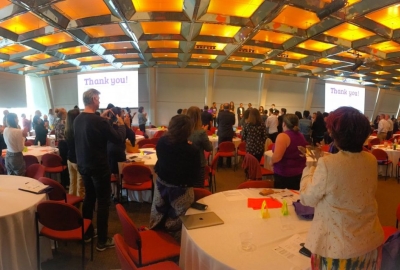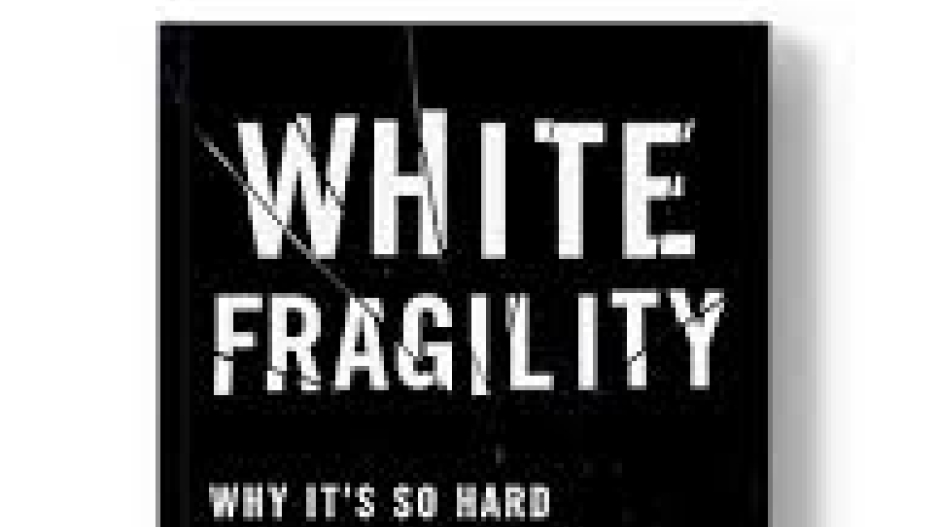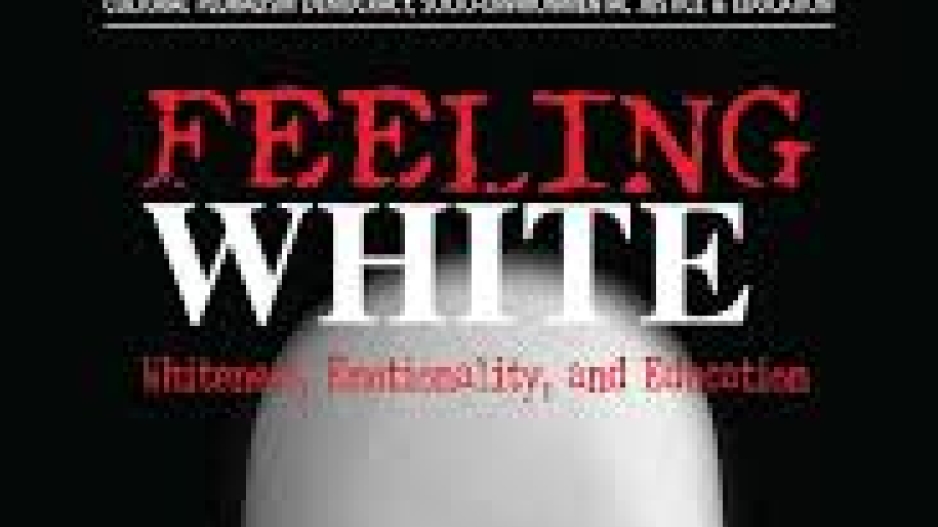
By Natalie McCabe Zwerger
For folx who are committed to disrupting and dismantling inequity and racial injustice, there is nothing unfamiliar about the ways the work can be undermined, de-legitimized, and sabotaged. In fact, books have and likely will continue to be written about these challenges. The truth is though: if we can predict it, we can prepare for it.
This piece will outline 5 ways that folx resist confronting inequity and racial injustice. These tactics include outward attacks, defensiveness, reductionism, subtle dissent, and upholding the status quo.
A few foundational premises should be noted before the types of resistance are outlined. First, authentically doing individual and collective work to dismantle systemic racism and injustice requires folx understand how they are situated in both historical and contemporary oppressions and what this positionality means for the populations they work with and serve. This type of personal reflection that results in transformational change requires an elevation of critical consciousness where the individual accepts that even their inaction is action and they, therefore, have no choice but to actively engage with their complicity, acceptance, and perpetuation of racism.
Second, a shared definition of white supremacy is essential. In their book, How to Fight White Supremacy, Akiba Solomon and Kenrya Rankin (2019) offer this definition:
White supremacy defines our current reality. It is not merely a belief that to be white is to be better. It is a political, cultural, and economic system premised on the subjugation of people who are not white. That subjugation takes on an infinite number of forms and is enforced with varying degrees of physical violence, mental abuse and robbery. White supremacy is the voice in our collective heads that says it makes civilized that one group of people gets to annihilate, enslave, incarcerate, brainwash, torture, sterilize, breed, and terrorize other people. White supremacy establishes, upholds, and normalizes hierarchy based on the premise that the less Black you are the closer you are to God. (p. vii)
Despite capacity-building sessions, training, and coaching grounded in this definition, individual white people will inevitably feel aggrieved as individuals who do not necessarily see, understand, or acknowledge their positionality in the collective system of whiteness.
Finally, individuals can learn to identify, acknowledge, and confront inequity at various levels. This capacity-building and engagement can range from one-day training sessions to deeply embedded systemic approaches to shifting policies, practices, and beliefs and can encounter resistance of the types below.
On the Attack
Resistance to equity via outward attack is strategic, manipulative, and targeted. Examples include what Dr. Cheryl Matias (2019) describes as a “perversity”: wielding legal remedies meant to protect marginalized folx as mechanisms to shield the privileged. These are the lawsuits that assert allegations of “reverse racism,” which, of course, is not a real thing. Racism is complex and can be described at both an individual and systemic level. The graphic below from Race Forward: The Center for Racial Justice Innovation (2014) offers a clear breakdown of the myriad ways racism is historically engrained in and permeates throughout society today. Starting with the systemic level, institutional racism is what permeates all institutions in society and why we see persistent racial disparities in education, the injustice system, health care access, etc. Structural racism names the wealth and income gaps that are accumulated over time based on race. The type of racism we are most effective at identifying is interpersonal racism, the overt bigotry and hatred targeting Black and Brown people. But, even at an individual level, there is also internalized racism where folx who do not hold power in the system have internalized racist ideology, stereotypes and misconceptions about themselves and other marginalized groups. It also refers to privileged folx who have internalized a level of normalcy, acceptance, and complacency with living in a racist society. From birth, white people--regardless of whether they see themselves as white--are afforded privileges by a system that propels them forward, while also protecting them when they feel attacked for benefiting from those privileges.

Another example of an outward attack is the leveraging of ahistorical representations of movements for racial justice to undermine equity, like all the educators who year after year misuse the words of Martin Luther King, Jr. to espouse color-evasiveness, a concept offered to replace that of the ableist “color-blindness” used previously (Annamma, Jackson, & Morrison, 2017).
A final example of outward attacks is undermining leaders of color. This can manifest in critiques of leaders’ of color experience, tenure, priorities, and investment in the work of promoting equity, particularly in large institutions like school systems with historically inconsistent commitments to fighting injustice.
On the Defensive
A less direct but equally toxic resistance to equity is rooted in defensiveness, an almost automatic reaction that is triggered when “the way we do things here” is challenged. Folx who feel as if their character is being called into question often react by accusing others of attacking them. The primary resistance in this category can be classified as white fragility, a term written about extensively by Dr. Robin DiAngelo. According to DiAngelo (2011):
White fragility is a state in which even a minimum amount of racial stress becomes intolerable, triggering a range of defensive moves. These moves include the outward display of emotions such as anger, fear, and guilt, and behaviors such as argumentation, silence, and leaving the stress-inducing situation. These behaviors, in turn, function to reinstate white racial equilibrium.
(p. 54)

A second defensive challenge is when folx amplify the voices of privileged dissenters to such a degree that they seem to vastly outnumber supporters. When doing transformational and reflective work, the shifts will be felt, which is to say, some practices that have been in place for a long time will no longer be acceptable because reflection has prompted a rethinking of how to best serve our young people. Challenges to personal beliefs and approaches, at times, will leave individuals feeling as if they are being called racist. Often times the outlier comments of feedback forms or the one staff member who has been the most vocal in their pushback are where energy is focused in terms of planning next steps and in-course adjustments, even when the reaction from the vast majority of the staff is overwhelmingly positive. The power and volume we afford privileged dissenters can detrimentally impact the trajectory of the work.
Finally, defensiveness manifests in deflection, “neurotic behaviors,” and other emotional responses designed to derail the work (Matias, 2016). In her book Feeling White: Whiteness, Emotionality, and Education, Dr Cheryl Matias suggests these behaviors are not only to be expected but are actually exceedingly common.

The Reductionist Strategy
There are also a number of tactics designed to reduce commitments to promote equity and racial justice down to unrecognizable stature. Dissenters can reduce a movement down to one training experience or even one activity or phrase. Capacity-building efforts can be shut down when terms like “white privilege” or “white supremacy” are used and misrepresented as exclusionary, not grounded in research, politically-motivated, and divisive. Much of this type of dissent results from elevating the discomfort of privileged folx over the harm that marginalized youth, families, and staff experience daily and has experienced historically. This imbalance perpetuates discounting the harm to all youth, families, and staff who exist in an inequitable, unjust system.
Subtle Dissent and Sabotage by Status Quo
It is important to note the more subtle dissenting folx who outwardly express a commitment to promoting equity and racial justice until it reaches their doorstep. These folx can often be the trickiest to challenge because they hide behind their good intentions, progressive ideologies, social justice stances, and equity warrior badges. Calling out their tactics of undermining the work (which could be through the guise of scheduling issues, concern for staff being over-committed, limited funding or other seemingly innocuous and legitimate priorities) is difficult because it requires acknowledging that despite their good intentions, they are roadblocks to progress.
Finally, it must be stated that anytime we do not name racial inequity in training, consultation, meeting, or conversation, we are implicitly condoning and upholding white supremacy, systemic racism, homophobia, transphobia, misogyny, xenophobia, Islamophobia, and injustice, period. Silence sabotages the promotion of racial justice by upholding “the racist status quo,” as Dr Robin DiAngelo calls it. Given this plethora of predictable pushback, the question becomes: Are you/we prepared individually/collectively to stay the course and hold fast to your/our commitments on the path to equity and racial justice?
Stay tuned for the next posts in this series that will give you ideas on how to do this!


